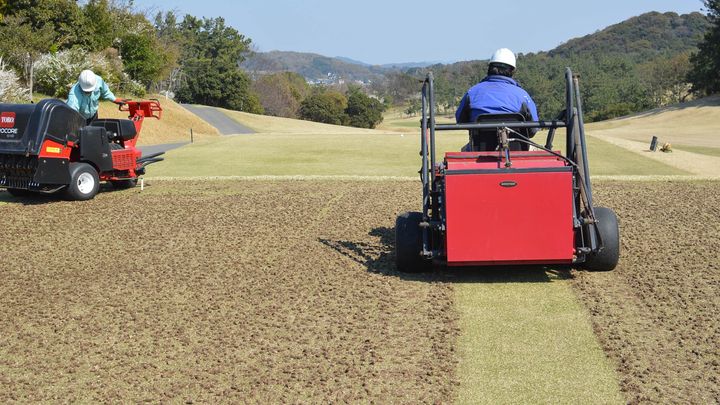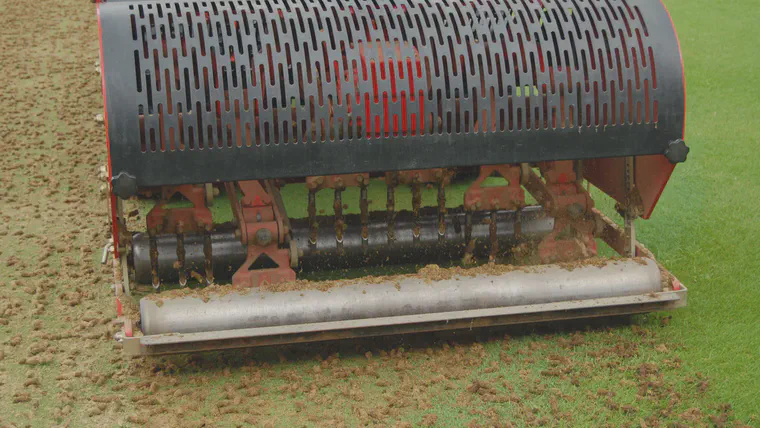You won't believe this common maintenance practice doesn't reduce organic matter at all
 Removal of these cores does not reduce soil organic matter %
Removal of these cores does not reduce soil organic matter %Hollow-tine aerification, coring, core aeration, whatever you call it, removes organic matter from the soil.
But if you measure the soil organic matter before pulling any cores, and then measure again after the cores are removed, the soil organic matter % will be exactly the same. Removing cores doesn’t change soil organic matter content one bit.
I hadn’t quite realized the full impact of this until I worked through the calculations myself a couple years ago as I was getting started with the OM246 project.
Loss on ignition (LOI) is a standard way to measure soil organic matter. This is an equation to calculuate the organic matter percentage from the mass of the sample before and after burning:
where
This is on a mass basis. And on that basis, removing cores and then checking OM again will give the same number. And when removing cores (and organic matter) from a turfgrass sward, the same phenomenon occurs. The OM is the same at the beginning and at the end of the operation.
Here’s how this works; I’ve copied from an e-mail conversation I had last year. A golf course superintendent wrote with some questions about frequent use of small diameter hollow-tines:
“I would like to see OM data to see how effective this is, compared to just solid needle tining at the same rate. Might reduce OM to some degree, but might not be significant enough to justify the increased cost.”
This was my reply.
You’ll be aware, or will after you calculate it, that removing material through core aerification of any size doesn’t actually reduce soil organic matter percentage.
Soil organic matter is customarily reported on a mass basis. Here’s an example.
Let’s say I come in with tines that are pulling a core 4 mm in diameter. Let’s say I do those on 3 x 3 cm spacing, so I put 1,111 holes of that diameter per square meter. Let’s say the core I pull is 3 cm deep too, and say the bulk density of the soil at that depth is 1.35 g/cm3.
Let’s say the soil to that depth is at 7% OM (70 g/kg).
In that 3 cm depth, the volume is 30,000 cm3/m2 and the mass is 40,500 g.
There are 70 g of OM per kg, or 2,835 g of organic matter in the top 3 cm.
Each removed core has a volume of 0.38 cm3 and a mass of 0.51 g.
Removing 1,111 cores takes out 422 cm3 of material per square meter and 570 g of material, of which 39.9 g is OM.
From that original 2,835 g of OM, we’ve dropped it by 39.9 g. Now we’ve got 2795.1 g of OM. It’s gone down, right? But so has the total mass of the rootzone.
Now the top 3 cm of the rootzone has a mass of 39,930 g.
What the hell? It is still 7% OM by mass.
Nothing changes unless sand is added.
All we’ve done is created temporary air space in the green and temporarily reduced OM by volume.

I think it is useful to be aware of this, especially if you are trying to modify the soil OM %.